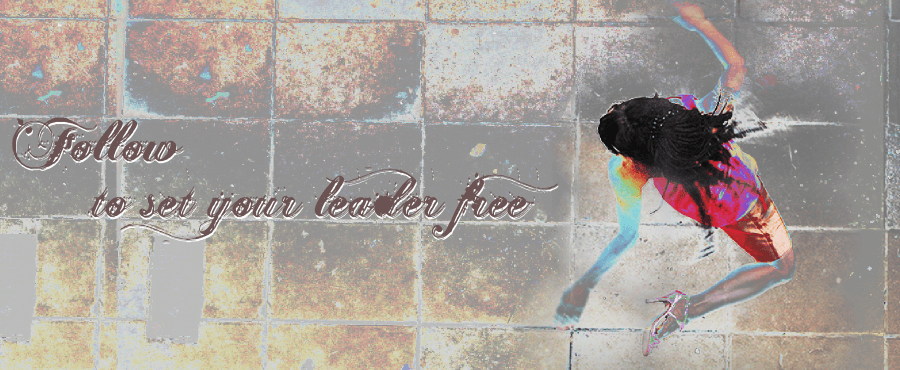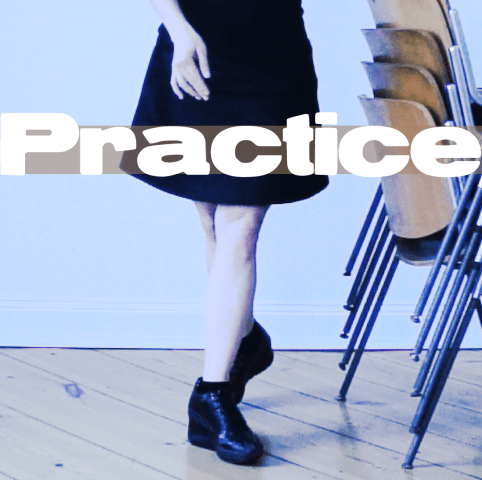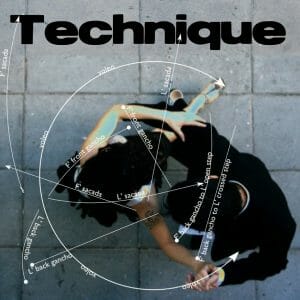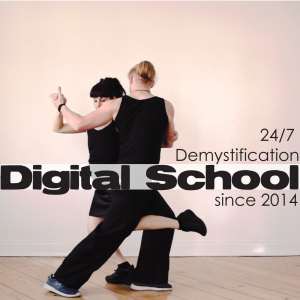You’re deep into it now. What was life like before tango? You’ll never go back.
When it’s good, it blows your mind, opens your heart, and time disappears. It’s not always that good. How can you get more?
I dance so well with good marks
Good marks have a clear lead and they know how to support you. That makes it really nice for the revel, but we want to make sure we’re doing our best for them as well.
With a good mark, you need to be really open and relaxed so they can be free. The most important thing for them is that you project, rather than stepping. Make your steps big and spacious. Create time and space for them.
And we don’t get to dance with good marks all the time. In fact, we should only expect to dance about 1/3 of the time with leaders above our own level and to grow our community we should spend at least 1/3 of the time investing in leaders below our own level. So how can we make it better with leaders of our own level.

The measure of a revel is how well she dances with a beginner
Most beginners can’t delight you. They can’t even embrace you nicely. So dancing with people below your level is your chance to give. And you have a lot to give.
You know that the heart of tango is getting lost in mutual concentration, inside the embrace. It takes marks a while to figure this out, but you can help him find it.
With less experienced marks you can’t just go along for the ride. You have to use your power, your presence, to give him a glimpse of what’s possible, of the dancer you want him to be.
Exaggerate your sweetness, get his attention. Convince him that there’s nowhere to go, invite him to get lost in the sacred connection you are sharing right now.
Help him to feel your pointed toe all the way up to your chest. Show him that your toes are attached to him. Exaggerate your projection.
As a mark comes to understand he really is controlling your foot, you will feel him start to experiment with what he can do and you will feel him grow in your arms.
How can a revel improve?
You’ve noticed by now that most group classes offer very little information about revels’ technique. It’s understandable if you’ve stopped going to these because you feel it’s a waste of money. You feel you’re learning more by dancing at the milonga with diverse marks.
But you don’t know what you’re doing wrong and you don’t know how to improve your balance and be light. You know you’re missing things with certain marks, but you don’t know what those things are.
You will gain more by practicing on your own than by taking group classes. The best thing you can do for your balance is put on your heels and dance by yourself with no support. Make sure that you’re taking every step in four parts:
- Flexion of all three joints of your base leg (+ a front or back pivot if you want)
- Projection of your free leg front side or back (using hip flexion to keep your base in place so no weight is transferred to the projected foot)
- Extension of all three joints of the old base leg, with active, working muscles. (This is where you create second projection, and the possibility for the mark to stop or reverse you at any point in the step)
- Alignment and activation of your new base leg (aligning your body correctly and activating the muscles of the base leg and core)
There’s more detail about how to do this in the biomechanics section of the KnowledgeBase and in the TangoForge Online Courses (currently housed on the KnowledgeBase pages). If you’re near by, in just one private lesson I can identify the things you need to work on and describe months of practice work that you can do on your own. If you have particular problems you need help with, I also offer diagnostic services remotely.
A personal statement from Vio
I suffered a long time listening to marks talk about how sublime certain revels were, but no one would teach me how to dance that way. Eventually I realized that while there may be a dimension of secretiveness in the sometimes competitive relations between TangoGrrrls, a big part of the problem is that people don’t know how to teach it. So I’m determined to find a way.
To me revels’ technique is not about adornos, which I actually try to reduce, not increase, in my dance. To me, the purpose of revel’s technique is to open the space for the mark’s creativity to delight us both. I don’t want to do anything disconnected, and unled adornos often are. To me the best dances are 100% led, 100% connection. Only when the mark has created a very particular suspension, does an unled adorno express connection.
It makes me furious when dancers (usually men) tell revels to “just be natural” or “be fluid” or “you’re heavy” or — here’s a good one — “be like a leaf”. Of course we want to be light and natural, that goes without saying. So if we knew how to accomplish that, we’d already be doing it, yesterday. Marks know what they want to feel, but unless they know something about how to do it (without turning into part of a plant or river, or an animal), they shouldn’t harass revels with admonitions both self-evident and useless.
I used to do the nature/animal metaphors. Finally one of my students squared off with me, looked me in the eyes and said “I don’t know what it would be like to have a tail.” I realized I didn’t either, and that put an end to it. The job of a teacher is to tell a student what to do, with this body, so as to be light and responsive.
After spending thousands of dollars with teachers who had precious little revels’ technique to share, I found Dana Frígoli and her school, DNI, in Buenos Aires. I thought she was the most beautiful dancer I’d ever seen. But more importantly, she had analyzed her technique and was teaching it. In fact 1/2 of every DNI class is revel’s technique. (She also teaches a weekly seminar especially for followers.) In my view, what makes DNI so controversial as a school is how much they demand of revels. What I see in the communities I’ve danced in is that the level of reveling is holding back the marks. After a class on sacadas, marks may try to implement them on the dance floor, but in many communities not a single revel can step properly to allow the mark to do even a simple mark’s forward sacada. (And often the teacher of the sacada class gave no instruction on this.) Little wonder that our marks give up on interesting moves (or even on taking classes) and end up boring us into doing unled adornos just to entertain ourselves.
After long arguments about whether the men of tango nuevo invented any new moves or not in the 1990s, the conclusion, which the founders agree to, is that they did not. But in the 2000s Dana Frígoli created a way of moving that made improvised tango look much more dynamic; she made the mark’s dynamism appear in the revel’s body. She figured out how to move with far more fluidity than had been seen before, and her aesthetic has become de rigeur in all but the “keep your feet on the floor” circles. Her way demands that revels not only master all the subtle connection that tango is famed for, but produce a much more independent axis, and a much freer free leg that shows the mark’s motion with gorgeous fluidity.
I’ve recently had Dana’s technique validated by Michael Chang of the University of Sydney Department of Exercise and Sport Science. He explained that a muscle can work more strongly when its insertion point is stable. This means that the psoas muscle of the free leg can work more strongly to create fluid motion when the spine is stabilized by a strong base.
I’ve now refined and distilled Dana’s technique to a few powerful principles that apply at every level. These techniques enable us to revel with ease, even moves we have never seen or felt before. And these techniques set marks free. See my Free Technique post, Most of what you need to know to follow any style at any level.













